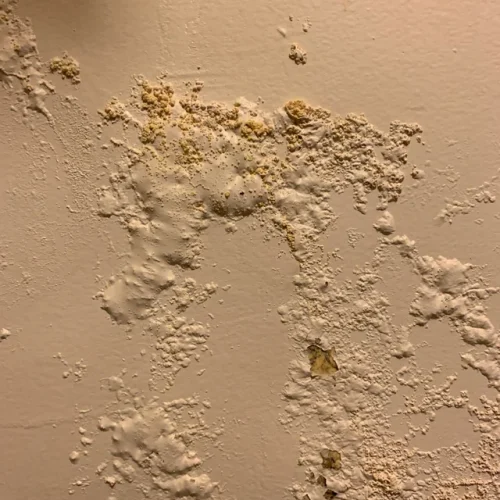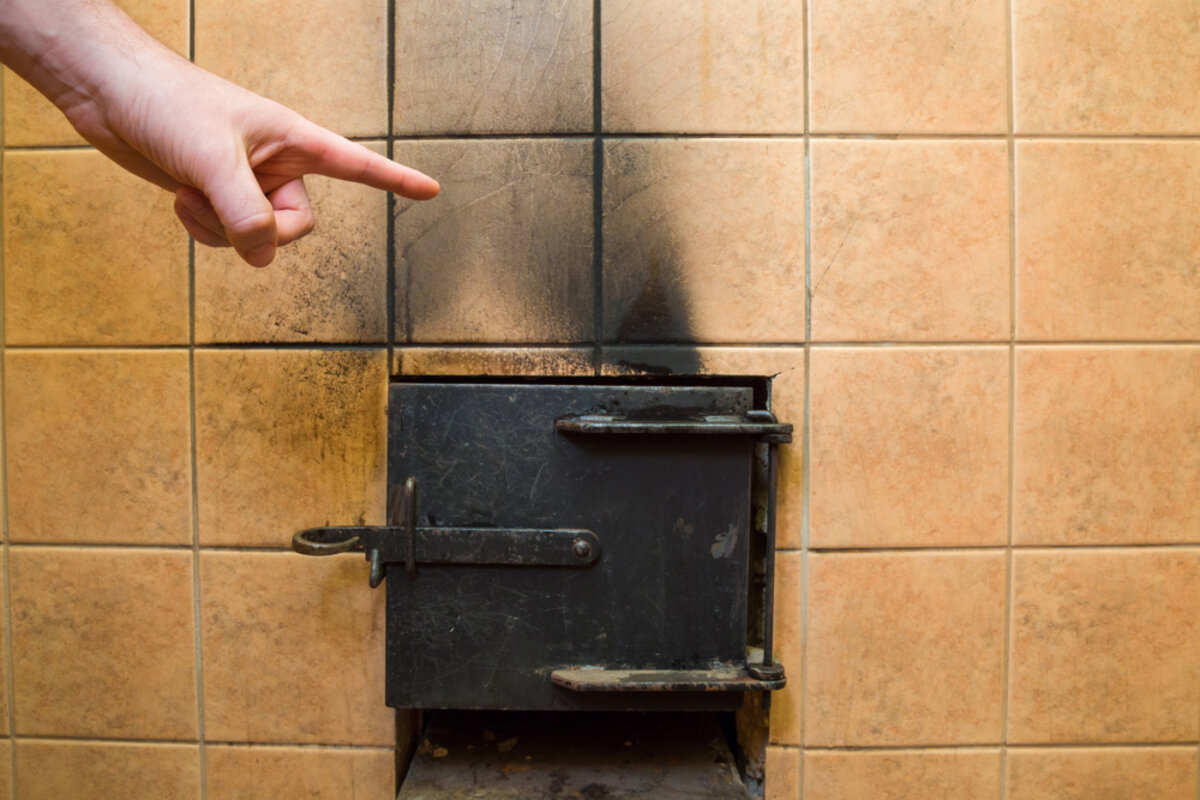Water damage can occur in the ceiling due to leaky or burst pipes or roofs or even an overflowing toilet. Minor ceiling water damage starts small, and you may not even notice it at first in many cases. However, if left unattended, it could cause irreversible damage to your ceiling. Sometimes, there is severe damage such as the ceiling crumbling.
So, it’s best to attend to a leaky or water-damaged ceiling as soon as possible to prevent further damage.
How to Know if You Have a Flooded Ceiling?
Ceilings can leak due to many reasons. Though not noticeable at first, the signs will eventually manifest in many forms, including a musty smell, water-filled fixtures, and even infestations.
Ceilings can leak persistently for days or even months together if not resolved. While you may not notice it instantly, some signs that tell you of a leaking or water-damaged ceiling include:
- Bubbling Paint
- Dark Water
- Other Events

1. Bubbling Paint
Bubbled paint is one of the most common signs of a leaking ceiling. The latex paint is strong enough to hold water. However, it can still pass through the drywall or plaster and drip down.
2. Dark Water
Another common sign that you may have a flooded ceiling is that the water that drips down is of dark color and stains the lights and other fixtures. The water dripping down from the ceiling will mostly have a musty or rancid smell, indicating that you may need to fix the problem immediately.

3. Other Causes
There may be other reasons your ceiling is leaking or flooded besides those mentioned above. These may include rain or snow or even previous leaks. You may notice this when showering or flushing the toilet.
So, the signs that you may have a leaking or flooded ceiling are evident. You will need to attend to and resolve the problem quickly to prevent further damage.
How to Fix Water-Damaged Drywall?
Before fixing a water-damaged drywall, you must take a few preventive measures. These precautions will ensure your safety from household dangers like lead-based ceiling paint, pipe wraps, and black molds.
So, before fixing a leaking or flooded ceiling, be sure to have protective gear on and stay safe from all these hazards.
Once you have taken all the preventive measures and put on protective gear, you can start fixing the problem by identifying the source.
The steps to take to fix a leaking or flooded ceiling include:
- Find the source and fix the leak.
- Repair the ceiling.
- Seal and repaint.
1. Find the Leak Source
The first step involves finding the leak, or more precisely, the source. Once you identify the source, stop the leak as soon as possible to prevent further problems.
2. Repair the Ceiling
If the ceiling has suffered minor damage, you may not need to replace the drywall. However, you should still fix the small gaps. Scrub the affected area with a brush, and then, wipe with a clean and damp cloth. Let the ceiling dry before fixing the cracks or gaps.
You can then use a putty knife and gag to fill the cracks if they are less than a half-inch wide. However, you may need to sand wider gaps.
If your ceiling has suffered significant damage, use a boxcutter or drywall saw to make straight cuts, and screw in the wood joists. Seal the joists using mud and tape and smoothen the surface.
You might also want to replace the backing material by applying thin layers of plaster and letting it dry. Once dry, you can continue to spread the plaster layers until they match the existing texture.
3. Seal and Repaint
Seal the water-damaged ceiling and paint it using a primer. Sealing the affected area helps block water stains and spots and prevents the roof from soaking. Also, you will need less paint to finish the job if you have applied a suitable primer.
So, apply at least two coats of primer before repainting the surface.
How to Dry Ceiling After Water Leak?
After stopping the leak, turn the fans on to let the ceiling dry. You can also use a high-volume fan or structural dehumidifier. Dry the wet ceiling by directing the fan or dehumidifier towards the affected area by placing it directly below the wet roof.
Once done, touch and feel the ceiling using a moisture meter, to ensure that it is dry.
Conclusion
You can follow the above method to fix a leaking or water-damaged ceiling. However, it would be better to call a professional such as Water Damage Near Me and have them assess and take care of the problem.

















